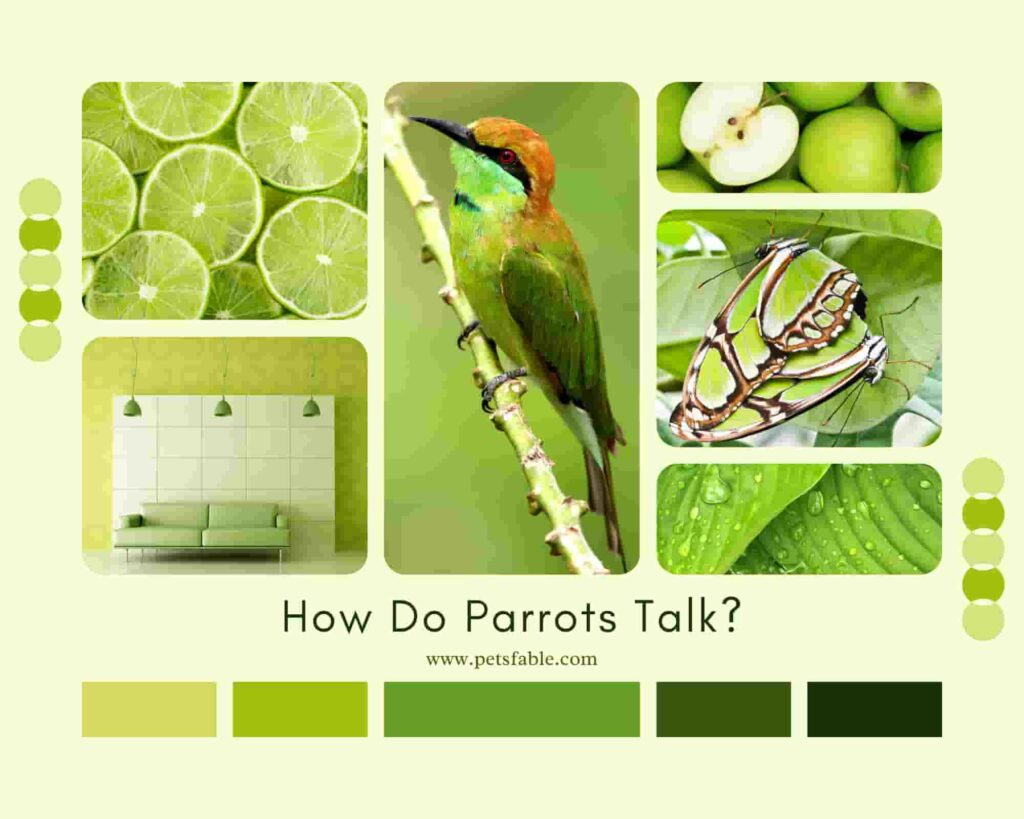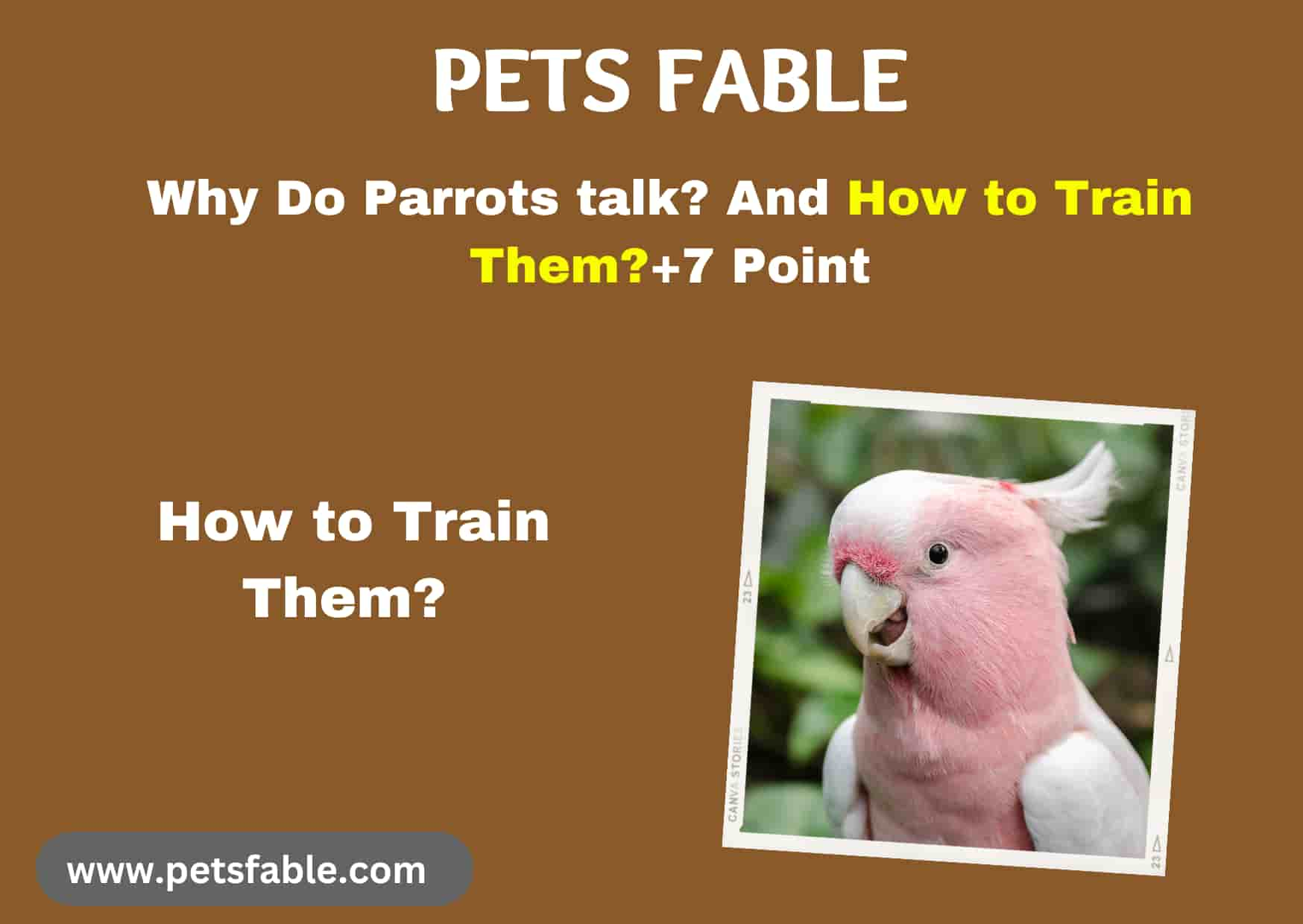Why Parrots Talk and How to Teach Them
Are you considering bringing a Parrots talk into your home? You’re in for a treat because these colorful birds have a unique talent—they can talk!
Not all birds have the ability to mimic sounds, but parrots are exceptional at vocalizing. If you’re interested in training your parrot to speak, this guide will walk you through the reasons why parrots talk and how to teach them to mimic your words.
How Do Parrots Talk?
To understand how parrots can talk, it’s important to know that they don’t have vocal cords like humans. While humans produce speech through the vibration of vocal cords in the larynx, parrots rely on a different structure called the syrinx.

This is located at the base of their trachea (windpipe). When air flows through the syrinx, it vibrates, producing sounds. The vocal tract then shapes these sounds into recognizable words.
Despite lacking lips or teeth, parrots can produce sounds similar to human speech by carefully manipulating their syrinx and vocal tract.
Why Do Parrots Talk?
Parrots are vocal learners, meaning they can learn and mimic sounds they hear in their environment. This ability is tied to a special part of their brain known as the “song system.”
This area of the brain is more developed in parrots compared to other bird species, making them particularly skilled at imitating human speech.
In fact, studies have shown that parrots can even distinguish the emotional context of words and phrases, which is why they often pick up on greetings like “hello” or “bye-bye” and use them in the right situations.
Historical Record of Talking Parrots
The first recorded instance of a talking parrot dates back to the 5th century BC. The Greek historian Ctesias of Cnidus wrote about a bird named “Bittacus,” which could speak.
Also read: how-to-tell-if-your-parrot-trusts-you-23-clear-signs
Scholars believe this bird was likely a type of parakeet, particularly the plum-headed parakeet, which fits the description in Ctesias’s account.
Do Parrots Understand What They Say?
While parrots can mimic human speech, it’s still unclear whether they fully understand the meaning behind the words they speak. However, they are very contextual learners.
For example, a parrot may greet you with “hello” when you walk into the room or say “goodbye” when you’re leaving.
Some parrots also learn phrases based on emotional tone, such as picking up swear words or excited exclamations when they notice strong reactions from people around them.
Which Parrot Species Are Best at Talking?
Not all parrots are equally skilled at mimicking human speech. Here are five popular species known for their exceptional talking ability:
- Amazon Parrots – Known for their impressive clarity and vocabulary, Amazon parrots are among the best talkers. They can also contextualize speech, making them fun and interactive companions.
- African Grey Parrots – These parrots are extremely intelligent and have the ability to learn a wide range of words and even understand their meanings. They are quick learners and are known for their ability to understand concepts like color, shapes, and emotions.
- Indian Ringneck Parakeets – Famous for their colorful plumage and strong ability to mimic speech, Indian Ringnecks can learn up to 250 words with proper training. Some may even repeat phrases with perfect clarity.
- Quaker Parakeets (Monk Parakeets) – Small in size but big in personality, these birds are eager to vocalize and can learn many words, especially if raised with consistent interaction.
- Eclectus Parrots – These parrots are quieter than some other species but are still excellent learners. They can pick up words quickly and even create unique sounds when stressed or excited.
Are Male Parrots Better Talkers than Female Parrots?
In some parrot species, such as budgies and cockatiels, male birds tend to be better talkers than females. Males are often more vocal in the wild, which might explain why they are quicker to pick up and mimic human speech.

However, this is not true for all species. For example, Amazon parrots, African greys, and macaws do not show a clear difference in vocal ability between males and females.
Also read: signs-your-parrot-is-molting-and-how-to-manage-it
How to Teach Your Parrots talk
Training a parrot to speak requires patience and consistency. Here’s a step-by-step guide to help you teach your bird to mimic words and phrases:
- Research Your Parrot’s Species
Some species are more likely to talk than others. Before you begin training, make sure you choose a species known for its vocal abilities, such as African Greys or Amazon parrots. - Choose Simple Words and Phrases
Start with easy-to-remember words like “hello,” “goodbye,” or “night-night.” Parrots are drawn to words that convey excitement or emotion, so phrases like “peekaboo” or “hi” are perfect to start with. - Repeat Consistently
Parrots learn through repetition. The more often you say the word or phrase, the more likely your parrot will mimic it. Try saying the phrase enthusiastically and clearly. - Use Positive Reinforcement
Reward your parrot when it repeats a word or phrase correctly. You can use treats, praise, or even a favorite toy as a reward. Positive reinforcement helps build a strong connection between the action and the reward. - Be Patient
Every parrot learns at its own pace. Some birds might pick up words in a few weeks, while others may take months or even years. Keep your sessions short and fun, and remember that patience is key. - Avoid Negative Reinforcement
Never punish your parrot for not learning quickly. Encouragement and consistency are far more effective than frustration.
Final Thoughts:
Parrots talk are incredibly talented at mimicking human speech, thanks to their vocal learning abilities. They don’t have vocal cords like humans, but instead use their syrinx to produce sounds that are surprisingly similar to our words.
While they may not fully understand everything they say, Parrots talk are very perceptive and can learn to associate words with actions.
If you’re training your Parrots talk, focus on repetition, patience, and positive reinforcement. While not all parrots will develop a large vocabulary, with the right care, many will delight you with their ability to mimic words and phrases.
